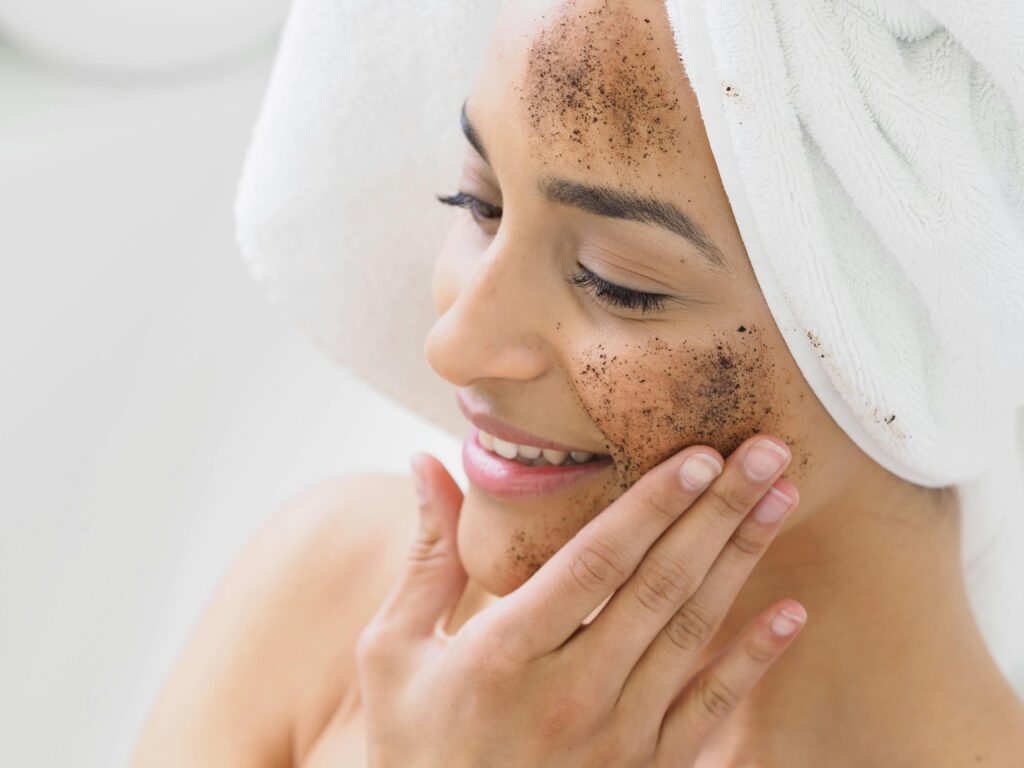How to Treat and Prevent Stretch Marks Naturally: A Complete Guide
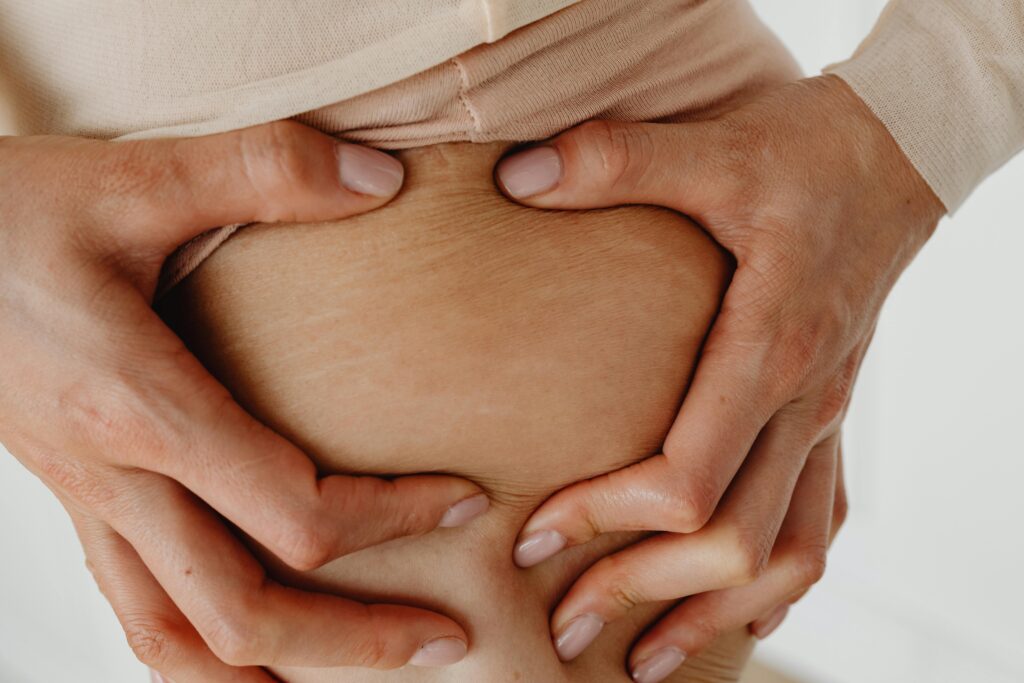
Introduction:
Stretch marks, also known as striae, are a common skin condition that occurs when the skin is stretched rapidly due to factors like pregnancy, weight gain or loss, growth spurts, or hormonal changes. These marks often appear as streaks or lines, typically in shades of purple, red, or silver, and are most commonly found on areas of the body that stretch, such as the abdomen, thighs, hips, and breasts.
While stretch marks are harmless and do not pose any health risks, many people seek ways to prevent or reduce their appearance for cosmetic reasons. The good news is that you can treat stretch marks naturally with simple, safe, and effective remedies. Unlike conventional treatments that may contain chemicals, natural remedies nourish the skin, support its elasticity, and promote healing without the risk of harmful side effects.
In this blog, we will explore how to treat and prevent stretch marks naturally, focusing on ingredients that are gentle on the skin yet effective in reducing their appearance. We will also discuss why natural remedies are a healthier alternative to store-bought creams and lotions, which are often filled with harsh chemicals that can cause skin irritation or long-term damage.
We’ll dive into several DIY remedies using natural oils, butters, and herbs that have been used for centuries to improve skin elasticity and treat stretch marks. We will also address preventive measures, lifestyle habits, and diet changes that support skin health and minimize the development of stretch marks.
Why Store-Bought Treatments Aren’t the Best Option

While many products on the market claim to reduce or eliminate stretch marks, most are packed with synthetic chemicals, fragrances, and preservatives that can irritate sensitive skin. Here are some reasons why you should consider using natural remedies instead of store-bought treatments:
1. Harsh Chemicals
Most store-bought creams for stretch marks contain ingredients like parabens, phthalates, and sulfates, which are known to cause skin irritation, allergic reactions, and long-term health risks. Parabens, for example, are endocrine disruptors and have been linked to hormonal imbalances and potential fertility issues. These chemicals can be absorbed into the skin, which is the body’s largest organ, making them potentially harmful.
2. Fragrances and Preservatives
Many over-the-counter stretch mark creams are scented, but these fragrances are often made from synthetic chemicals that can be irritating, especially for those with sensitive skin. Additionally, preservatives used to extend the shelf life of these products can lead to skin dryness, breakouts, and inflammation.
3. Ineffectiveness
While some store-bought creams claim to reduce stretch marks, their effectiveness is often minimal. The harsh chemicals can sometimes worsen skin irritation and may not address the root causes of stretch marks, such as changes in skin elasticity, collagen production, and hydration.
Natural Treatments for Stretch Marks
In contrast to store-bought products, natural treatments use ingredients that are gentle, soothing, and healing. Here are the top natural remedies for reducing and preventing stretch marks:
Table 1: Natural Ingredients for Stretch Marks
| Natural Ingredient | Benefits | How It Works | How to Use |
|---|---|---|---|
| Coconut Oil | Hydrates skin, improves elasticity, reduces scarring | Contains antioxidants and fatty acids that nourish and heal the skin | Massage directly onto stretch marks twice daily. |
| Shea Butter | Deeply moisturizes, promotes skin regeneration | Rich in vitamins A and E, boosts collagen production | Apply to affected areas and massage for several minutes. |
| Aloe Vera | Soothes and hydrates, reduces inflammation | Contains compounds that promote collagen formation | Apply fresh aloe gel to stretch marks and leave for 15 minutes. |
| Vitamin E Oil | Repairs damaged skin, promotes healing | Known for its skin-healing properties, helps repair scars | Apply vitamin E oil directly to stretch marks twice daily. |
| Lavender Essential Oil | Reduces inflammation, promotes skin repair | Anti-inflammatory properties that support skin regeneration | Dilute with a carrier oil and massage onto stretch marks. |
| Castor Oil | Hydrates and heals, boosts skin elasticity | Packed with ricinoleic acid that promotes skin cell turnover | Apply to affected areas and massage in circular motions for a few minutes. |
| Rosehip Oil | Reduces the appearance of scars, promotes skin renewal | Contains high amounts of vitamin A and essential fatty acids | Massage onto the skin twice daily. |
DIY Remedies for Stretch Marks
Here are several natural DIY recipes you can make at home to treat and prevent stretch marks:
1. Coconut Oil and Lavender Oil Treatment
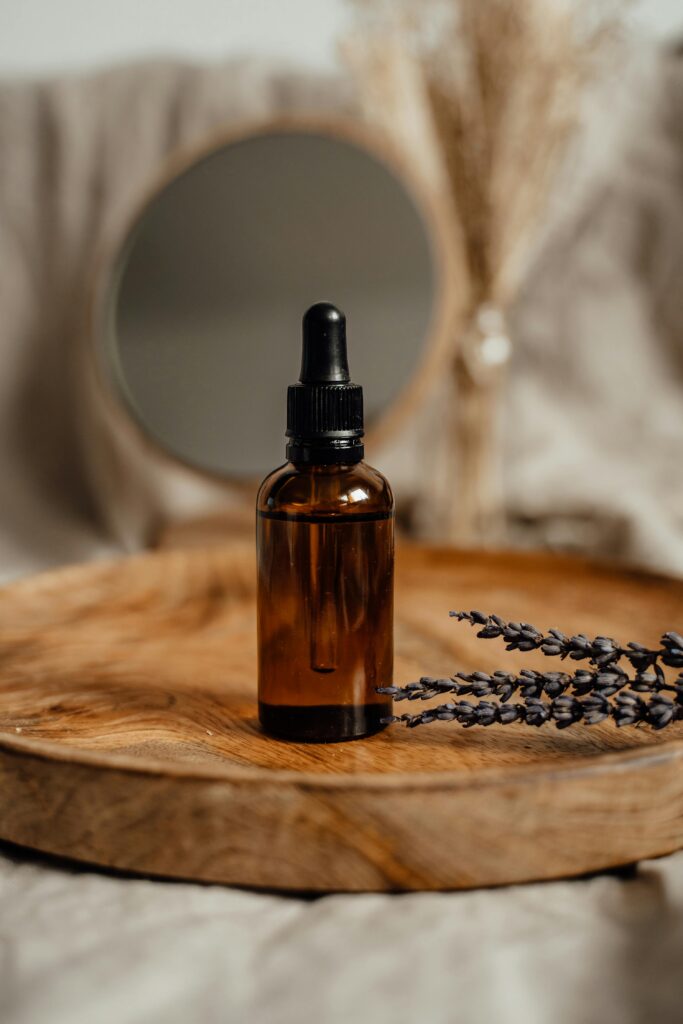
Coconut oil is a powerful moisturizer that keeps the skin hydrated, while lavender oil promotes skin healing. This combination not only moisturizes but also helps reduce inflammation and scar tissue formation.
Ingredients:
- 2 tablespoons coconut oil
- 5 drops lavender essential oil
Instructions:
- Mix the coconut oil and lavender oil in a bowl.
- Massage the mixture into your stretch marks twice a day.
- Allow the oils to absorb fully into your skin.
Benefits: Coconut oil deeply moisturizes, while lavender oil soothes the skin and promotes healing.
2. Shea Butter and Vitamin E Oil
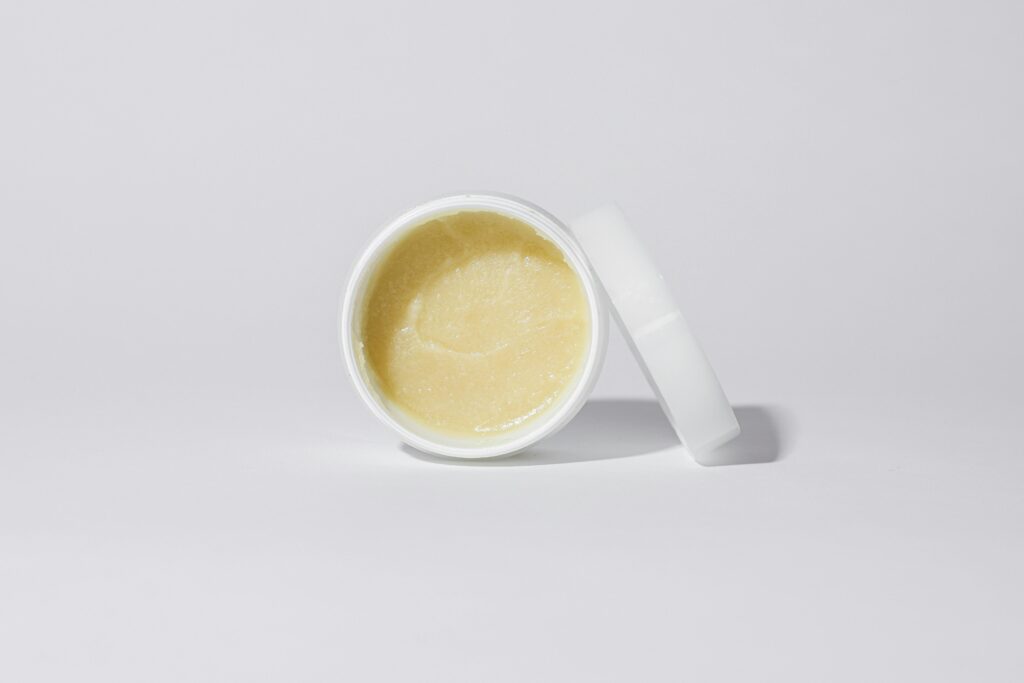
Shea butter is an incredibly rich moisturizer that boosts skin regeneration, while vitamin E oil helps repair skin cells and improve the appearance of scars.
Ingredients:
- 2 tablespoons shea butter
- 5 drops vitamin E oil
Instructions:
- Warm the shea butter until it becomes soft.
- Add the vitamin E oil and mix well.
- Massage the mixture into the affected areas, focusing on the stretch marks.
- Leave it on overnight for the best results.
Benefits: Shea butter provides deep nourishment, and vitamin E supports skin healing.
3. Aloe Vera Gel and Castor Oil
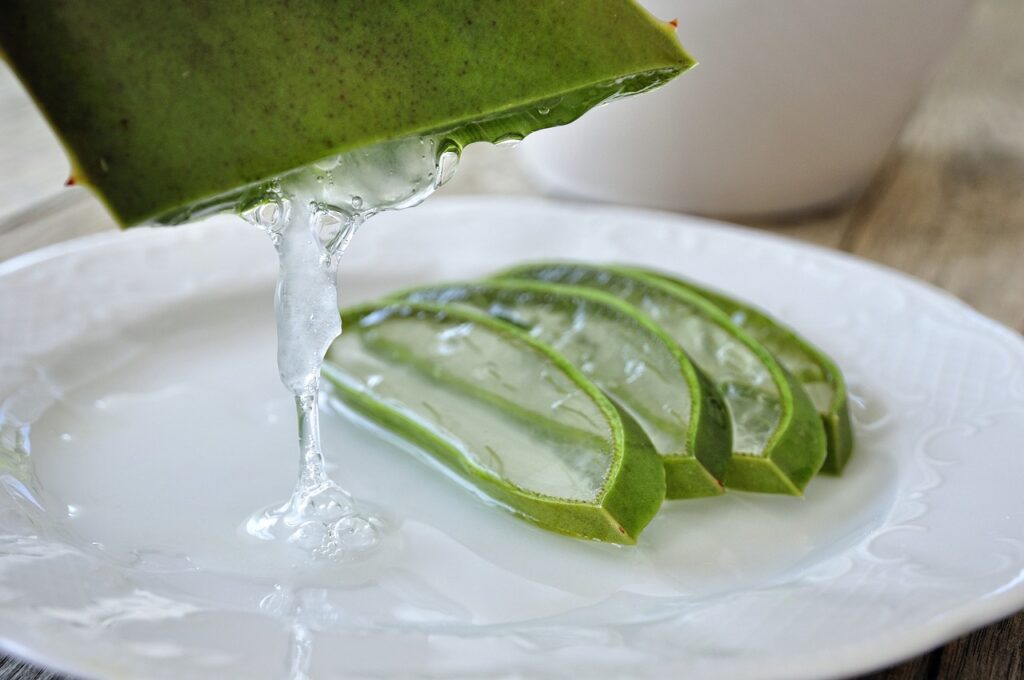
Aloe vera soothes the skin and hydrates, while castor oil promotes skin elasticity and cell turnover. Together, they work to reduce inflammation and prevent the formation of stretch marks.
Ingredients:
- 2 tablespoons aloe vera gel
- 1 tablespoon castor oil
Instructions:
- Mix aloe vera gel and castor oil together in a small bowl.
- Apply the mixture to your stretch marks and gently massage.
- Leave it on for 30 minutes and then rinse with lukewarm water.
Benefits: Aloe vera calms the skin, while castor oil hydrates and helps repair damaged tissue.
Preventing Stretch Marks Naturally
While treating existing stretch marks is important, it’s even better to prevent them from forming in the first place. Here are some tips to prevent stretch marks using natural methods:
- Hydration is Key: Keeping your skin hydrated is essential for preventing stretch marks. Drink plenty of water throughout the day and use a rich moisturizer to keep your skin supple and elastic.
- Maintain a Healthy Diet: Eating foods that are rich in vitamins A, C, and E, zinc, and omega-3 fatty acids can help improve skin elasticity and prevent stretch marks. Incorporate more fruits, vegetables, nuts, and seeds into your diet.
- Exercise Regularly: Regular exercise helps maintain healthy skin by promoting blood circulation and boosting collagen production. This can help keep your skin firm and less prone to stretching.
- Use Natural Oils: Regularly applying natural oils like coconut, almond, or olive oil to your skin can prevent dryness, which may lead to the development of stretch marks.
- Avoid Rapid Weight Gain or Loss: One of the most common causes of stretch marks is rapid changes in body size. Try to avoid quick weight gain or loss to give your skin time to adjust.

Why Natural Remedies Work Better Than Store-Bought Products
Natural remedies for stretch marks are not only more effective in promoting skin health, but they also do not contain the harmful chemicals that can irritate or damage your skin. Unlike many store-bought creams, natural remedies use ingredients that nourish and repair the skin, rather than just masking the appearance of stretch marks.
Additionally, many over-the-counter creams for stretch marks contain harsh chemicals that can be absorbed into the body, leading to potential long-term health risks. By choosing natural alternatives, you can avoid exposing your body to these chemicals and instead provide your skin with the nourishment it needs to stay healthy and vibrant.
Conclusion: Embrace Natural Treatments for Healthier Skin
Stretch marks are a natural part of life, and while they may not be completely preventable, they can be treated and reduced with natural remedies that nourish and strengthen your skin. Using ingredients like coconut oil, shea butter, aloe vera, and lavender oil can help improve skin elasticity, hydrate the skin, and fade the appearance of stretch marks over time.
Store-bought products may promise quick results, but they often come with harmful chemicals that can damage your skin and health. By opting for natural treatments, you not only avoid these risks but also support the health and vitality of your skin in the long term.
Incorporate these natural remedies and preventive measures into your daily routine to keep your skin healthy, smooth, and stretch mark-free. With patience and consistency, you’ll see visible improvements and embrace your natural beauty with confidence.
Key Takeaways
- Stretch marks are common, but they can be reduced and treated with natural remedies.
- Store-bought creams often contain harmful chemicals like parabens and phthalates that can irritate the skin.
- Ingredients like coconut oil, shea butter, and aloe vera nourish the skin and improve elasticity.
- Prevention involves hydration, a balanced diet, and regular exercise.
Reference list:
- “The Science of Stretch Marks: Causes and Treatments.” Dermatology Journal
- “The Power of Natural Oils for Skin Health.” American Journal of Natural Remedies
- “Why You Should Avoid Parabens in Skincare.” Environmental Working Group
- “The Benefits of Shea Butter for Skin Elasticity.” Journal of Dermatological Science
- “Aloe Vera: A Healing Agent for Skin Care.” Indian Journal of Dermatology
As an Amazon Affiliate, we earn from qualifying purchases, but at no extra cost to you.


